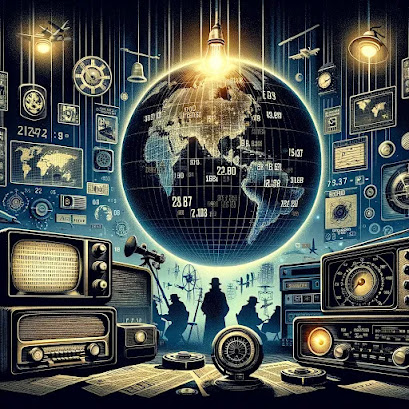The Enigmatic Signals of Espionage
For decades, the airwaves have whispered secrets in the form of number stations—mysterious shortwave radio broadcasts consisting of seemingly random sequences of numbers, letters, and sometimes eerie melodies. These cryptic transmissions, originating in the shadows of the early 20th century, have served as a fascinating intersection of espionage, communication, and intrigue.
This comprehensive exploration dives into the operational mechanics, the relentless efforts at decryption, the speculation surrounding their origins, and the evolution of number stations in the digital age, painting a picture of a world where secrecy reigns supreme.
The Operational Intricacies of Number Stations
Number stations operate on the fringes of the radio spectrum, broadcasting their coded messages to operatives in locations remote or hidden. These transmissions, often structured around a set schedule, begin with distinctive signatures—a unique sequence of tones, a fragment of a folk song, or a simple series of beeps—to signal the start of a message intended for specific ears.
Example 1: The Lincolnshire Poacher station, notorious for using a cheerful English folk tune, would abruptly transition from music to a series of spoken numbers, each sequence meticulously repeated to ensure the message's clarity and reception. This pattern of repetition underscores the importance of accuracy in these clandestine communications.
Example 2: The Swedish Rhapsody, another well-documented station, utilized a haunting music-box melody followed by a child’s voice reciting numbers in German. This juxtaposition of innocence with the covert nature of espionage activities adds a layer of surrealism to the broadcasts, emphasizing the lengths to which agencies go to mask their communications.
The Decryption Efforts: A Community Fascinated
Despite the intended secrecy, many stations have not broadcast in vain. A dedicated community of amateur radio enthusiasts, cryptography experts, and curious minds has risen to the challenge, attempting to decode the undecipherable.
Example 1: UVB-76, or "The Buzzer," stands out for its persistent, monotonous buzzing interrupted occasionally by Russian voice transmissions. These rare and often cryptic interruptions have spawned a subculture of listeners who dissect each anomaly, searching for patterns or messages in the static.
Example 2: The Conet Project represents a monumental effort to archive these ephemeral broadcasts, compiling recordings that span decades and continents. This project not only preserves the history of several stations but also provides a valuable dataset for those driven to unlock their secrets, highlighting the global fascination with these broadcasts.
Speculations Abound: The Architects of Secrecy
While concrete evidence is scarce, a consensus within the research community points towards the involvement of national governments and their clandestine agencies. The purpose? Intelligence agencies use secure communication methods to correspond with spies deployed abroad.
Example 1: The eerie Gongs Station, with its repetitive chimes followed by number sequences in Russian, has been speculated to originate from Soviet-era espionage efforts. Its broadcasts, reminiscent of Cold War spy tactics, suggest a method of reaching agents in hostile or surveilled environments.
Example 2: The origins of E3, the "Lincolnshire Poacher," have been traced to signals emanating from the vicinity of RAF Akrotiri in Cyprus. Such findings provide compelling evidence of the station's role in British intelligence operations, offering a glimpse into the strategic importance of the number of stations in global espionage networks.
The Digital Transition: Number Stations in the Modern Era
As technology advances, the role and prevalence of number stations have evolved. Though their numbers have dwindled in the face of digital communication's ascendancy, their legacy and the intrigue they inspire endure.
Example 1: The "Buzzer" continues its relentless transmission, a constant in an ever-changing digital landscape. Its persistence is a testament to the enduring value of number stations, perhaps in roles or capacities yet to be fully understood.
Example 2: New stations such as the "Squeaky Wheel" occasionally emerge, reminding us that the game of espionage adapts to the times. These modern incarnations of number stations, whether for training, tradition, or active operational use, signal that the curtain has yet to fall on this intriguing aspect of intelligence communication.
Conclusion: The Lingering Whisper of Number Stations
With their blend of historical intrigue and modern mystery, number stations continue to captivate those drawn to the shadowy corners of international espionage and cryptography. They stand as a reminder of the lengths governments will go to safeguard their secrets and the relentless curiosity of those seeking to uncover them. As relics of a bygone era or active assets in the digital age, number stations embody the complex dance of secrecy, technology, and human ingenuity, challenging us to listen closely to the whispers of history and the echoes of the unseen.













0 Comments